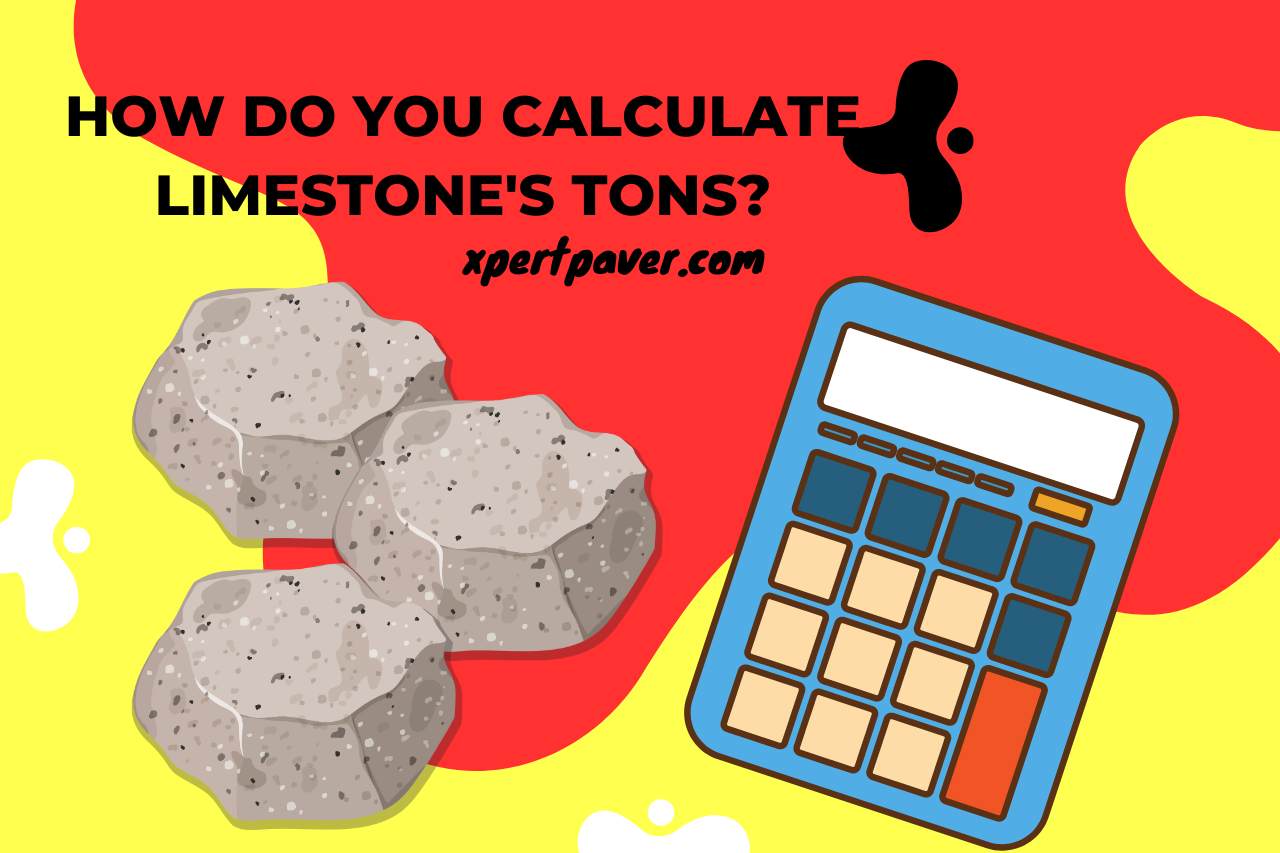A type of rock called limestone is used widely in several sectors, including construction and nourishing animal products. Along with these more common purposes, limestone is also employed in mines to supply lighting and lessen the quantity of chilly dust thrown up by the various activities there. Although limestone’s most well-known byproduct is arguably cement, it can usually be purchased for landscaping or home improvement projects. How much is limestone per ton? Read the article to learn more about factors affecting prices, the cost of limestones per ton, and other concerns.
What Factors Determine the Price of Limestone Per Ton?
Limestone’s pricing is significantly influenced by its quality. A greater price is typically demanded high-quality limestone with a desirable chemical composition, few impurities, and good physical qualities. Different limestone grades are utilized for different purposes.
The particular limestone needed for a certain application might influence its cost. Compared with lower-grade limestone used for agriculture, high-grade limestone utilized in industrial applications or as a flux in steel production may cost more.
Limestone’s price is influenced by its purity, particularly by its amount of calcium carbonate. Since it is utilized in many industries, including construction, agriculture, and industry, limestone with a higher calcium carbonate content is typically more valuable.
The selling price of limestone is significantly affected by the market’s supply and demand dynamics. Prices usually increase when there is a high demand for limestone and a constrained supply. On the contrary, costs may drop if there is an excess of limestone or a decline in demand.
Is Limestone Expensive to Buy?
Several variables can affect the expense of limestone costs. Comparing limestone with many other building and manufacturing components, it is generally thought of as a cheaper material.
However, depending on elements, including quality, purity, grade, location, market demand, extraction and processing expenses, and current market conditions, the exact selling price of limestone per ton might differ greatly.
One tonne of limestone can fluctuate from $30 to $38 per ton. This is an extensive range, and pricing may be higher or lower depending on the particular elements mentioned previously.
High-quality limestone used in specialist applications or acquired from distant regions, for instance, may fetch a premium price. Still, lower-grade limestone utilized for more widespread applications may be more affordable.
How is the Quality of Limestone Assessed in Pricing Per Ton?
A significant component of limestone’s chemical makeup is its calcium carbonate concentration. Better quality limestone often has a higher calcium carbonate percentage.
Limestone’s purity and suitability for specific applications can be adversely affected by impurities such as silica, iron, alumina, and magnesium. Limestone purity is the lack of pollutants and impurities. Higher-quality limestone is generally thought to be purer while retaining fewer contaminants.
In certain industry sectors or applications, contaminants’ presence might influence how it performs. The quality of limestone is rated based on a number of its physical characteristics.
Hardness, Density, porosity, texture, colour, and strength are some of these characteristics. Its appropriateness for various uses, including construction, agriculture, or production, can be influenced by its physical characteristics.
The homogeneity and dependability of the limestone quality throughout time are referred to as consistency. Industries frequently want a continuous supply of limestone with known qualities since it allows for consistent manufacturing standards and performance.
How Much is Limestone Per Ton?
The cost of limestone per ton depends on some variables, including location, quality, grade, demand from the marketplace, and particular industry requirements. As a result, it can be challenging to estimate exact pricing without considering these factors.
The normal price range for limestone is between $30 to $38 per ton. Additionally, considering their needs and market conditions, particular applications or sectors may have varying price points.
Variables like market conditions, processing and extraction costs, and transportation costs can also influence the selling cost of limestone.
It is advised to contact local suppliers, quarries, or construction material providers to receive the most accurate and current price for limestone in your specific location and for what you want to use.
Based on the market’s current situation and geographic region factors to consider, they will possess the most pertinent details regarding prices.
Can Limestone Prices Vary Based on the Supplier or Seller?
Based on variables including labour costs, equipment efficiency, energy costs, and transportation costs, suppliers may have variable expenses for production. These variances may affect how much they charge for limestone.
Prices for limestone quarrying operations vary depending on where they are. A supplier’s quarry may have cheaper transportation expenses if it is closer to the market, which could result in lower pricing for its limestone.
Price competitiveness may be higher among suppliers with a greater supply of limestone or those located in more readily available limestone-producing areas. On the other hand, suppliers with a tight supply or high local demand could charge more.
Due to consumer confidence and perceived quality, established and widely recognized vendors with a strong brand and reputation may command higher pricing.
Some vendors could provide value-added services like specialized processing, custom size, or quality control procedures. Prices might escalate as a direct consequence of these additional services.

How do you Calculate Limestone’s Tons?
Calculate the limestone material’s length, width, and height using the same unit of measurement (for example, feet, meters, or inches). If the limestone is irregularly shaped, you may need to divide it into smaller regular shapes (like cubes or rectangles) to compute the volume.
To calculate the volume in cubic units, multiply the length, breadth, and height dimensions together. For instance, if the dimensions were in feet, the volume would be measured in cubic feet if the dimensions were in feet.
The specific Density of the limestone you are using should be determined because limestone densities might vary. Typically, the Density of an object is given in tonnes per cubic unit, such as tons per cubic yard or tons per cubic meter.
You may need to convert the Density if given in an alternative measurement than the one you want to use. To calculate the weight in tons, multiply the volume by the Density. Ensure that the density and volume units are consistent.
Consider a Limestone Block with the Following Measurements:
- Size equals 10 ft.
- Size: 5 feet wide
- Three feet tall
Assume that there are 2.5 tons of limestone in every cubic yard.
Determine the Volume:
Volume equals length, width, and height
Volume: 10 feet by 5 feet by 3 feet is 150 cubic feet.
The volume needs to be converted from cubic feet to cubic yards if necessary because the Density is specified in tons per cubic yard. Since there are 27 cubic feet in a cubic yard, divide the volume by this number.
150 cubic feet / 27 equals 5.56 cubic yards of volume (in cubic yards).
Determine the Weight:
Volume times Density = Weight
5.56 cubic yards of weight is 2.5 tons per cubic yard or 13.9 tons.
The total dimensions of the limestone block are, therefore, roughly 13.9 tons.
Are There any Seasonal Fluctuations in Limestone Prices Per Ton?
Limestone is a common agricultural soil amendment to balance pH levels and give crops vital nutrients. The rotation of crop cycles, planting and harvesting seasons, and limestone demand in agriculture can all impact. Prices can fluctuate as farmers and agricultural businesses modify their needs for limestone as necessary.
Road construction, residential and commercial buildings, and infrastructure development are the most prevalent applications for limestone in construction.
The weather impacts construction activities, with peak seasons in spring and summer when the weather is more favourable.
During these seasons, there will likely be an increase in demand for limestone, which might result in price changes. Demand can fluctuate according to the season in industries that use limestone, such as cement manufacture and lime production.
Extreme weather conditions, including heavy rainfall or below-freezing temperatures, can influence infrastructure and construction projects, affecting the demand for limestone and possibly causing price variations.
Are Limestone Prices Affected by Market and Supply?
Limestone is a common agricultural soil amendment to balance pH levels and give crops vital nutrients. The rotation of crop cycles, planting and harvesting seasons, and limestone demand in agriculture can all impact.
Prices fluctuate as farmers and agricultural businesses modify their needs for limestone as necessary. Road construction, residential and commercial buildings, and infrastructure development are the most prevalent applications for limestone in construction.
The weather tends to impact construction operations, with peak seasons in spring and summer when the weather tends to be more favourable. During these seasons, there will likely be an increase in demand for limestone, which might result in price changes.
Demand might differ according to the season in industries that use limestone, such as cement manufacture and lime production.
Extreme weather conditions, including heavy rainfall or below-freezing temperatures, can influence infrastructure and construction projects, affecting the demand for limestone and possibly causing price fluctuations.
Watch this one,
Video Credits – Haifa Limestone
You May Also Like

![Read more about the article How to Install Rubber Pavers? [What To Put Underneath]](https://xpertpaver.com/wp-content/uploads/2023/03/can-you-play-games-from-an-external-hard-drive-25-300x200.jpg)

